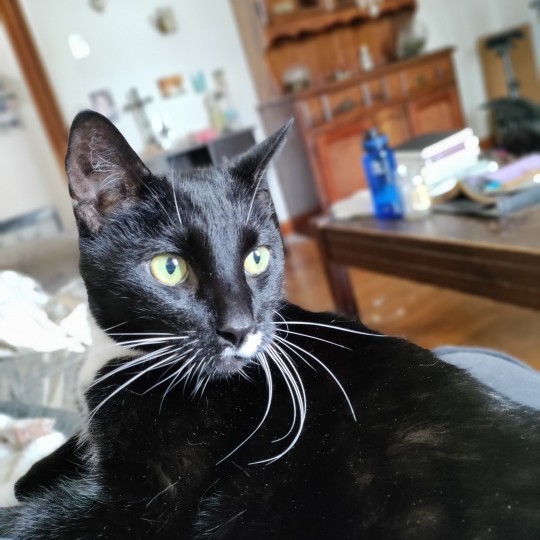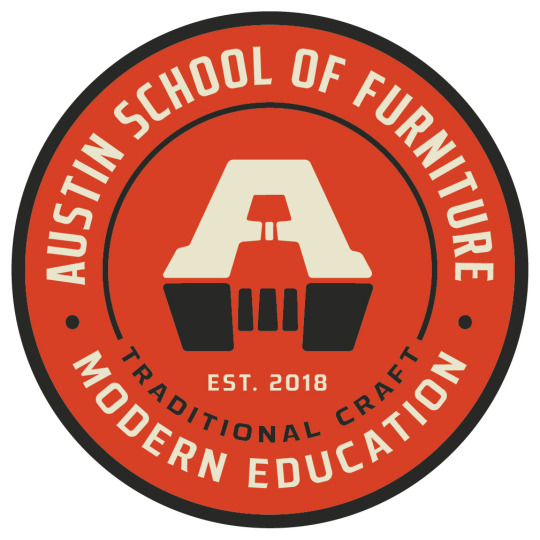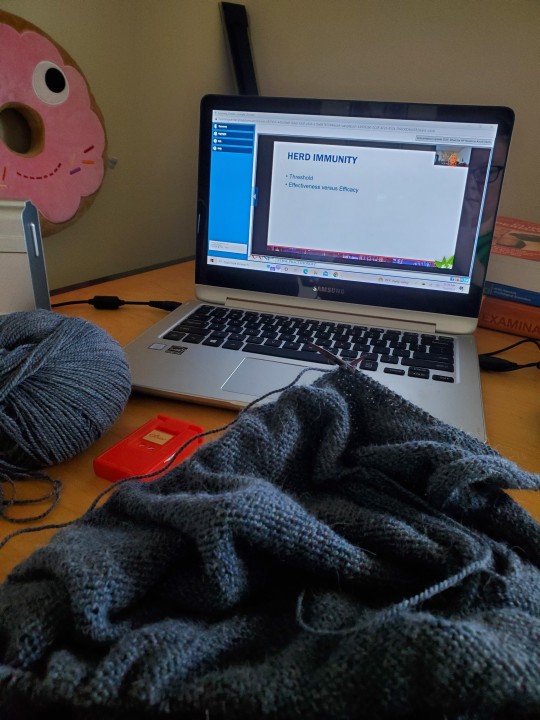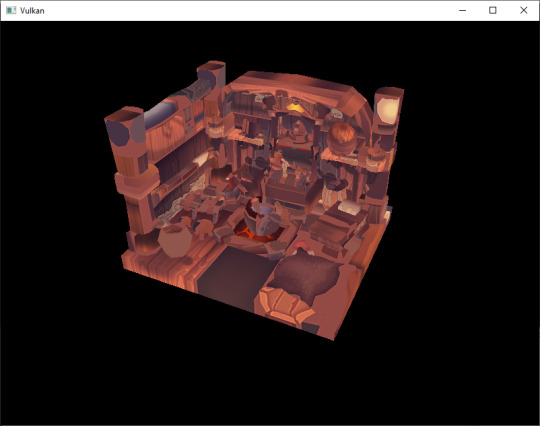#continuing education
Note
Do you guys recommend any public/free veterinary research sites? Are there any vet focused platforms where I might be able to access recordings of surgeries? Our final year work expects us to include photos and videos and im not sure where to find them. Thank you!!
Hi, Sueanoi here
Clinician's Brief is one of my favorite site to get free information. Although, you need to make and account, and they're formatted in an article newsletter kinda way.
Merck Vet Manual is also another of my favorite. This one contains very good details of veterinary information to help you with actual cases diagnosis and treatment planning.
Vin is incredble with its huge collection of data and resources that include picture and videos and even 3D models to help veterinarians refresh their knowledge, and is a community that you can look for consultations.
It's free for students (you need to register to access all of it) but there is a subscription fee for graduated vets.
Good luck with you project!
91 notes
·
View notes
Text



Continuing Doggie Education (Socialization)…!
Dolly kept the lady company while the lady was working (line editing some files for work). Dolly practiced some quiet mat (“spot”) time at a local outdoor shopping mall’s food court area. Lots of people walking by, some dogs, and a few skateboards and scooters too.
Yummy treats for calmly watching the world go by…. 🐾🐾
9 notes
·
View notes
Text

This weekend was a LOT, but I successfully completed my Wilderness First Responder recertification! This is my fourth recertification since I first became a WFR back in 2013, and each time I recertify I feel like I'm able to add more context and understanding to the material, even though we're largely reviewing the same key topics each time. I don't routinely use my training because I'm not spending large amounts of time in the backcountry as a medic for a group outing, but I have maintained the certification because I do go hiking a lot and want to be prepared just in case something happens to me or someone I'm with.
And it's even more important now that I'm a nature tour guide. Even though my work is primarily in the frontcountry, in case of an injury or illness on a tour I want to be able to offer medical support until EMS shows up. And "wilderness medicine" also applies in disaster situations, not just the backcountry; it's for any situation where regular medical treatment is more than two hours away. Given that I live very close to the Cascadia Subduction Zone, it's not out of the realm of possibility for a major earthquake/tsunami to hit in my lifetime.
As a bonus, the recertification class counts as this year's continuing education hours for my Oregon Master Naturalist certification! And the CPR/AED training I get as part of the recert class is necessary for my Oregon Outfitter/Guide permit. I have to recertify every two years, but I'm considering aiming for every year and a half, because it really helps me to refresh the material in a group setting with lots of practice scenarios. I don't have the time or money to be a perpetual college student, but I take the opportunity to learn more whenever I can, to include developing more practical skills.
#wilderness medicine#WFR#Wilderness First Responder#medicine#continuing education#education#first aid#outdoors
17 notes
·
View notes
Text
NaNo 10k Excerpt
So I hit 10k for NaNo and want to post an excerpt from my first Continuing Education story, which features Briar and Semira and a pack of werewolves!
So, for those who have been following...
Tagging my list: @k-v-briarwood and @the-grim-and-sanguine
If you wanna be tagged, please let me know!!
8 notes
·
View notes
Text

At last! This morning I finally rendered my first triangle using Vulkan.
#woot woot#accomplishments#vulkan#open source#coding#cgi render#computer graphics#first time#making progress#software development#continuing education#my screenshots#rainbow
19 notes
·
View notes
Note
Hey I'm curious, if you did get back into academia what would you go for? Would you go back for multiple things if you could?
The timing of this ask couldn't have been better; I just got home from the library a few minutes ago, and my selection is a pretty good indicator of my current academic interests:
Shark Trouble, Peter Benchley (nonfiction)
The Math Book (Big Ideas Simply Explained series)
Astronomy for Dummies, Feinberg
The Wave: In Pursuit of Rogues, Freaks, and Giants of the Ocean, Susan Casey
Easy Algebra Step-By-Step, 2nd ed., McCune & Clark
I've almost finished Carl Sagan's Billions and Billions, which I've been reading piecemeal since February (it's a good supplement to his extremely enjoyable Cosmos series), and of course a rampaging monster novel for pure entertainment. 😆
The math books are to brush up on my algebra skills in anticipation of learning calculus (guided self-learning), and I have a deep (ha) and abiding love for the ocean and sharks. I'd originally intended to check out some amateur radio books—I'm a Level 1 Technician but I let my license lapse and need a refresher to renew—but there were none to be found. I'll look again later.
But to answer your question, if time and money were no object, I'd go back to school for multiple things—and probably end up a lifelong scholar. I'd work on earning my Masters in English or Creative Writing first (I have an Associate's in the former), maybe even a PhD (oh, to be Dr. Hal Bender!) and take more language classes, too. A degree in Art and/or Illustration would be agreeable to me as well. Wouldn't mind getting back into symphony either, though I probably wouldn't study music formally. Same with Film; I learned more about storytelling from a film class than I did in any lit class I've taken.
The arts are my most developed skill set, but I love the sciences, particularly oceanography, geology, GIS, and computers. I've only recently taken a keener interest in astronomy (thanks, Carl), though I don't see myself ever getting a degree in it. (Unless?)
TL;DR, I just want to live in a university and learn and write stuff and make art and travel the oceans and understand how everything works. Become wise as well as knowledgeable. I'm glad I've got a library to help me work on achieving that.
#ask bender#academia#goals and aspirations#continuing education#adult learning#support libraries#stay curious#carl sagan#<- this guy singlehandedly rekindled my desire to continue my education#even if i don't do it in a university. i can still read and keep learning
2 notes
·
View notes
Text

Handsome boy keeping me company while I work on my Cat-Friendly certificate 💚🐾🤓
#no one told him cats are supposed to be independent jerkfaces#no question he is 100% a jerkface (affectionate) but he is so loving and snuggly and wants to be with me and Lu 24/7#lol#personal#cats#cat-friendly#LVT#vet tech#Veterinary#AAFP#ISFM#CE#continuing education#learn better then do better#duo maxwell
16 notes
·
View notes
Text
youtube
Meet The Last Man!
In March 2024, I will be offering the module "Meet The Last Man" with SPACE (Signum Portals for Adult Continuing Education) online via Signum University.
Mary Shelley's novel The Last Man is one of the most relevant books we can read right now, and I'm really looking forward to exploring it with students!
Here is more information.
#Mary Shelley#The Last Man#Science Fiction#Apocalyptic Fiction#Pandemic Fiction#Political science fiction#SFF#Signum University#Amy H. Sturgis#Youtube#Gothic#Online Education#Continuing Education#Virtual Education
3 notes
·
View notes
Text

#studio furniture#custom furniture#woodworking#Austin Texas#furniture school#continuing education#trade school
7 notes
·
View notes
Note
please tell me about sayer and bernard roth, and do not pretend to be normal about it 🩷
okay okay okay, anon I am giving you a little kiss on the forehead. I am gonna be going back through my notes so if this takes a hot minute, that’s why.
Update: This is… getting very long so I’m going to do this in sections. Your introduction lies below the readmore. Because I’ve hit 850 words. It really needs an edit. I am not doing that. Have fun. There will be another installment later.
So. Corsets (and Why We're So Weird About Them)
So, a few things need to be established here to understand the roots of modern anti-corset rhetoric. I will be dealing with sexism, ableism, and likely touching on racism within the medical field during the 19th century. If you’re anything like me, you will be angry by the end of this, just hopefully at some guys who have been dead a really long time, and not me. I’m just some guy who is three arbitrary credits off having a degree in History (with High Distinctions, btw. I’m very proud of my disabled ass for my current 6.0 on our 7-point scale)
France, America, and the UK in the 19th century were very Christian in the 19th century. The research I’ve done mostly focused on these countries, however I did briefly dabble in German history because the medical dress reform movement more or less started there, but more on that later.
As many of you know, it is a fairly standard belief in (many denominations of) Christianity* that if you do something Wrong™ then you will be Punished™ with misfortune. During this period, if someone was ill then they had Done Something To Deserve It™. This meant that, often, your physical condition was treated as a shorthand for your moral standing.
* For the purposes of this discussion, Catholicism is included under the “Christianity” blanket, I know many Catholics disagree with that categorization, but I am not writing “Christians and Catholics” fifty times
The medical field was professionalized to a recognizable degree in the 19th century. A lot of that professionalization resulted in super fucked up ideas about gender, race, and disability. The professionalization of medicine was parallel to the rise in global eugenics movement. This will probably surprise no-one but needs to be stated, nonetheless.
Many disabilities are more frequently observed in Women* than Men*. Scoliosis, which was the focus of my research for my major work, was one of these conditions. It followed, therefore, that women were doing something Bad™ that men weren’t** and the easiest options were exercise and corsetry. Now, doctors genuinely believed that women were more delicate and susceptible to disease and injury (both to the physical and spiritual being). For the most part, many doctors did NOT want women to be doing as much exercise as they were recommending for men. So corsets were Public Enemy #1
* I’m nonbinary, I know that the binary is bullshit and biology is weird soup, but I am using the terms applicable to the medical understanding and discussion of the period, it’s just easier when referring to primary texts.
** Many men did actually wear corsets. I want one of the advertisements as a tattoo. They’re great.
Right. So now that we have the basic facts outlined, onward. I will include a reference list below. I might put some of my recommended reading in a google drive or smth if anyone wants that.
So. First of all we should probably talk about what a corset is. “Oh by Charlie I know what a corset is” shush. Maybe you do. Maybe you know what a modern corset is. This is my ted talk and I will be as obsessive about my definitions as I like.
For the purposes of SEO algorithms, a corset is a generic term that could refer to bodies, stays, corselets, true corsets, and anything you can find on google when searching for a fast fashion corset top. A generic term that can be applied wantonly for a thousand different garments from the 16th century to today is not very helpful.
When I say “Corset” I mean a garment that began to evolve from stays in the 1820s and had established itself as the popular foundational garment by the 1840s and remained so until the 1920s. For simplicities sake, a corset is a “rigid bodice” supported by vertical boning (Usually baleen/whalebone. Sometimes steel, sometimes reed, sometimes cording)(1). Its primary function was to support the bust, but they also formed the foundation of popular fashions (2).
Corsets work by distributing weight of the bust (and also clothing) across the entire torso, supported by resting on the hips (think of the difference between cradling a toddler – or a heavy box - and sitting them on your hip)(2). They also formed a smooth surface so that clothing could be tight to the body while limiting wrinkling but, more importantly, IT STOPPED WAISTBANDS NEEDING TO DIG INTO THE BODY TO STAY UP. They could be tight to the body, but the corset would not allow them to dig into the body. They were (USUALLY) custom made to the individual and (USUALLY) only worn to the tightness comfortable for the level of activity for the individual. (I will talk about exceptions later). Tight lacing wasn’t hugely common. Usually the drastic shape was achieved through optical illusion and padding (Bust improvers, bustles, bum pads) (3)(4). If you make the hips and bust appear larger, the waist will naturally appear smaller, regardless of actual measurements.
God this is going to be so long I haven’t even got to the Bernards. Okay so this might have to be in installments.
REFERENCES
1 Steele, Valerie. Encyclopedia of Clothing and Fashion. Kindle ed. Charles Schribner’s Sons, 2005, p. 290
2 Waugh, Norah, and Judith Dolan. Corsets and Crinolines. Abingdon, Oxon; New York, Ny, Routledge, 2018, p. 75.
3 Kunzle, David. Fashion and Fetishism: Corsets, Tight-Lacing and Other Forms of Body Sculpture. Sutton Publishing, 2004, p. 89.
4 Steele, Valerie. Fashion and Eroticism: Ideals of Feminine Beauty from the Victorian Era to the Jazz Age. Oxford University Press, 1985, pp. 62-63
#Corset history#Victorian history#fashion history#academia#i guess#Historyblr#I am so so excited about this#This is the first infodump i've done for fun on this because i burned out on it after my major project BUT I AM SO EXCITED#which is why this is a mess i am so sorry. I want to publish my short story and it's exegesis which is why I'm not just posting that#the Roth and Sayre sections are coming i promise. I want to talk to them both. study them like bugs. Brodhurst too.#Also I don't know if I should put pictures in. let me know if you want pictures in the next bit#Continuing education#Corsets#Vintage styles not vintage values#Part one#Corset Chronicles#Corset Chronicles part one#(thats how i'm gonna tag this infodump series i think)#anon#thank you anon this made my day#part 2 may be tonight or tomorrow depending on spoons
5 notes
·
View notes
Text

2 notes
·
View notes
Text

Continuing education and cardigan knitting.
18 notes
·
View notes
Text
I don’t know who needs to hear this, but OSU has an online beginner’s botany course available for free right now.

#Botany#plants#horticulture#master gardener#continuing education#free courses#comment for a link i guess?#does tumblr still hide anything with a url in it#mooc
8 notes
·
View notes
Text
Continuing Education: Fey
Basic Info: Fey are creatures that are so heavily magic touched that it alters their physiology. They have some sort of magical affinity, and how it manifests depends on the individual.
Creation: Pure Fey are born of magic, in a very magically rich area, but people can become fey-touched by spending a lot of time into a magically charged zone.
Appearance: It's hard to tell which people are fey just by appearance. Pure fey can look like any type of human, but just...almost ethereal. Like looking at a moving Renaissance era statue or something, perfection of human form. Full fey do have pointed ears, but they're often covered by hair and the degree of the pointy-ness is variable, so some can be barely noticeable.
Abilities: Fey are able to utilize magic in some way. Generally, this has to do with a type of nature or biology, but again, it depends on the Fey. For example, Achaemenes doesn't have magic in the traditional sense, but his healing has a bit of fey luck imbued in it. Like, think an operation has a 50% chance of survival, Achaemenes will get it probably 90% of the time. Nothing provable as magic but he's far better at medical stuff than a pre-med student has any right to be.
Weaknesses: Pure fey are easily harmed by iron, can be tracked by any beings that can detect or track magic, and they cannot lie. (Most of them are very good at things like lies of omission and tricky wording, but they cannot tell an outright lie. Fey-touched individuals may have various bits and pieces of these--perhaps an iron allergy, a vague magical aura, or severe anxiety/discomfort around telling a lie.
On Magically Rich Areas: What makes an area "magically rich?" They come from significant events in an era long, long ago when magic was more prominent in the world. Some bits of the history and the past are etched into the land, and the remaining magical creatures tend to be drawn to those hotspots.
#continuing education#worldbuilding#continuing ed: sots#continuing ed worldbuilding#continuing ed sots worldbuilding#fey#fey worldbuilding#about fey
9 notes
·
View notes
Text

It's an interesting render, but not the result I was hoping for.
I've begun Chapter 27 of the Vulkan tutorial. On Monday I got my app to load the "Viking room" 3-D model without crashing. It's clear, however, that there are bugs in my code, since the render is supposed to look like this:

Luckily, I've seen similar distortions in OpenGL. Based on visual comparison the renders, I strongly suspect my issue is caused by incorrect mesh-vertex indices. My plan is to carefully review my code changes, and if that doesn't reveal the root cause, I'll dump the first few indices at various points in the process and see if they're correct.
Since both images above are derivative works, I should credit the creator of the 3-D model:
This work is based on "Viking room" (https://sketchfab.com/3d-models/viking-room-a49f1b8e4f5c4ecf9e1fe7d81915ad38)
by nigelgoh (https://sketchfab.com/nigelgoh) licensed under CC-BY-4.0 (http://creativecommons.org/licenses/by/4.0/).
#vulkan#3d graphics#3d model#open source#creative commons#software bugs#jvm#java#3d render#tutorial#3d mesh#troubleshooter#continuing education#my screenshots#sketchfab
14 notes
·
View notes
Link
I’ve gone back to school and I’m taking you with me for a little ride!
I hope you’ll all join me on a peek into my first few classes of Industrial Sewing and Millinery (hat making)!
#school#sewing school#sewing#millinery#industrial sewing#college#continuing education#hats#hat making#serger#sewing machine
5 notes
·
View notes